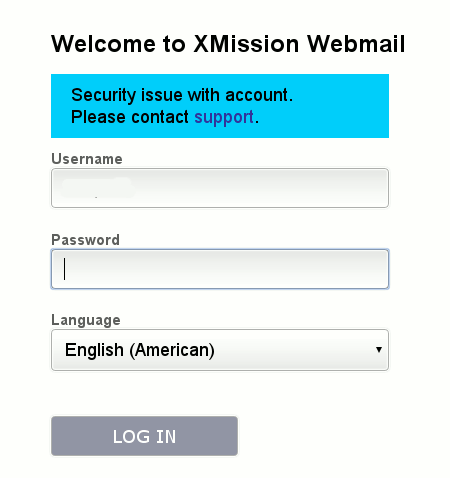Difference between revisions of "Compromised"
(→Compromised) |
(→Compromised) |
||
| Line 1: | Line 1: | ||
=Compromised= | =Compromised= | ||
| − | When you try to log into webmail do you get something like this? | + | When you try to log into webmail do you get something like this?<br> |
[[File:Compromised-1.png]] | [[File:Compromised-1.png]] | ||
Revision as of 13:27, 7 April 2014
Contents
Compromised
When you try to log into webmail do you get something like this?

Lets take a look and find out what could be happening
Hackers want access to anything they can get their hands on, that includes your email account. Your email account can be used to send out spam email. How did they get your password? Before we talk about how they got your password lets review some practices of having a secure password.
Lets take a look at what makes a bad password
- Do not use only letters or numbers
- Do not use names of your family members, spouses, boyfriends, girlfriends or pets
- Do not use your phone number, birthdates or Social Security numbers
- Do not use your username
- Do not use any words that can easily be found in a dictionary
Some things you might want to think about also is NOT using some of the most common passwords -
- password
- changeme
- 123456
- admin
Password Criteria & Guidelines
- Passwords must be between 6 and 32 characters in length and are case-sensitive.
- Passwords must contain both alphabet and numeric or special characters.
- The most secure passwords are random. Visit passwordcard.org to generate random passwords for all your online accounts.
- You cannot change your password to the same password, or use your account name as your password.
Change your password often
We know it may be hard to keep track if you have multiple passwords. However it is suggested that you change your password often, once to twice a year. Most companies required you to change your password every 90 days. This is a great habit to get into. You can use sites like LastPass to store your passwords if you do not remember them.